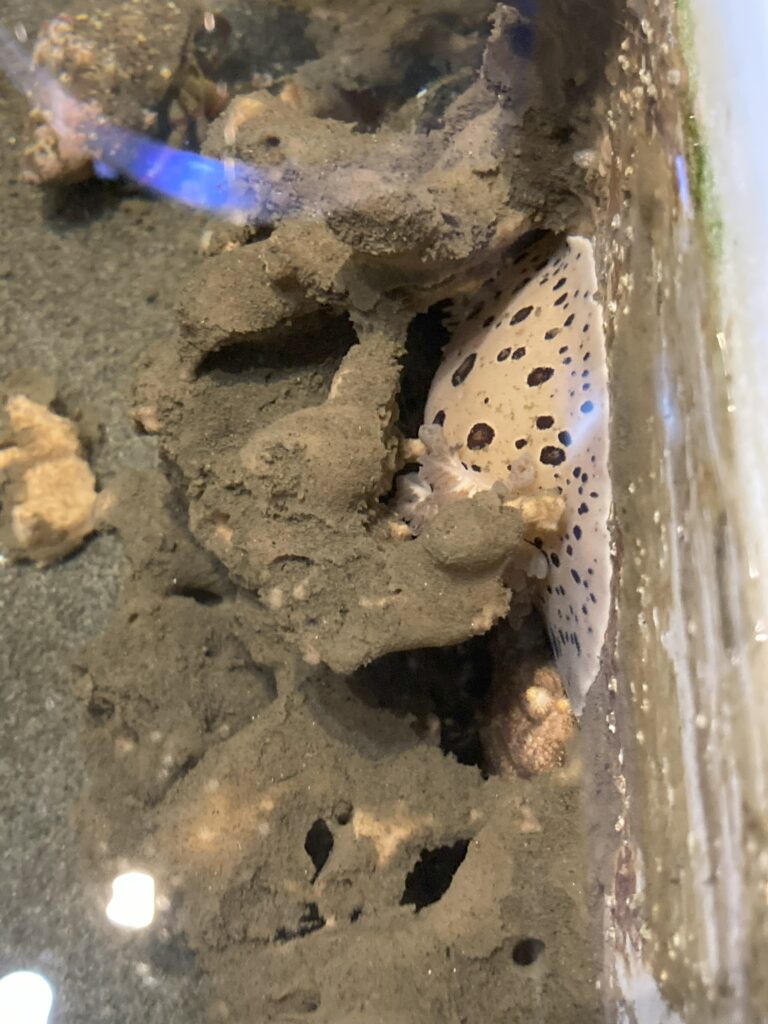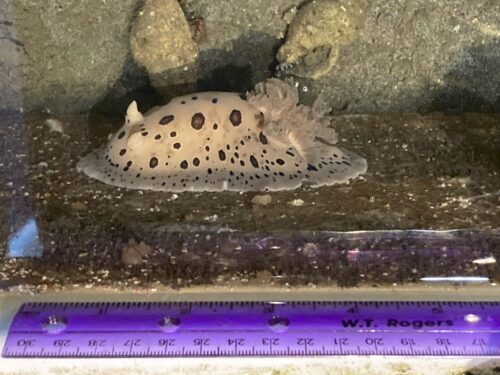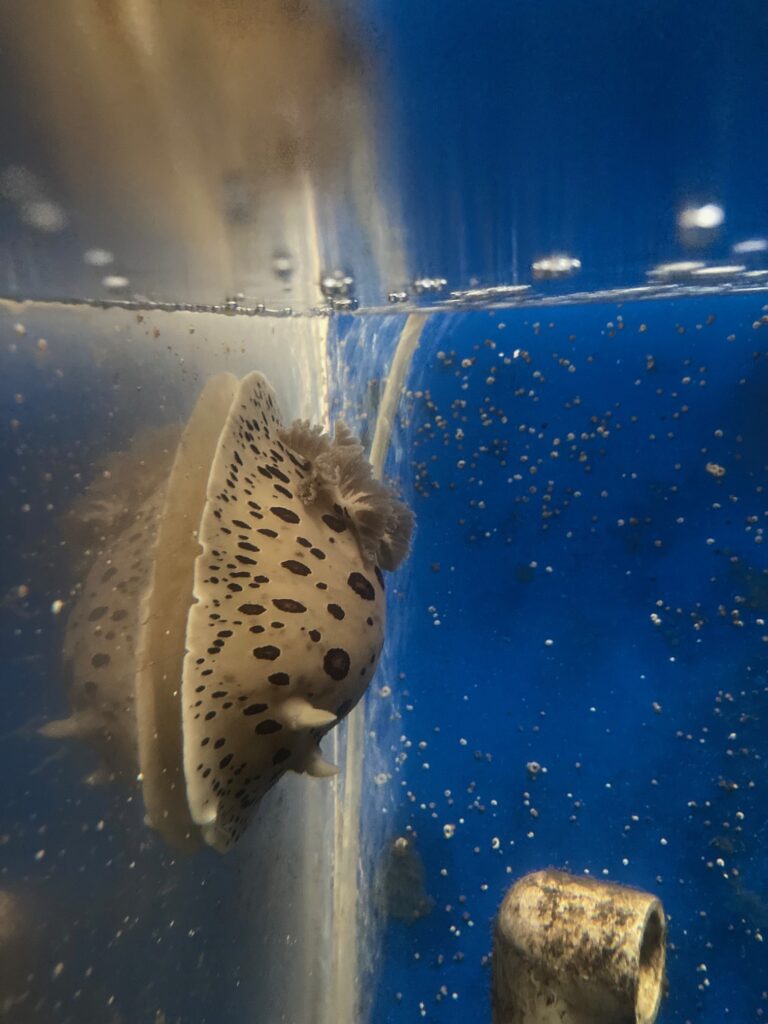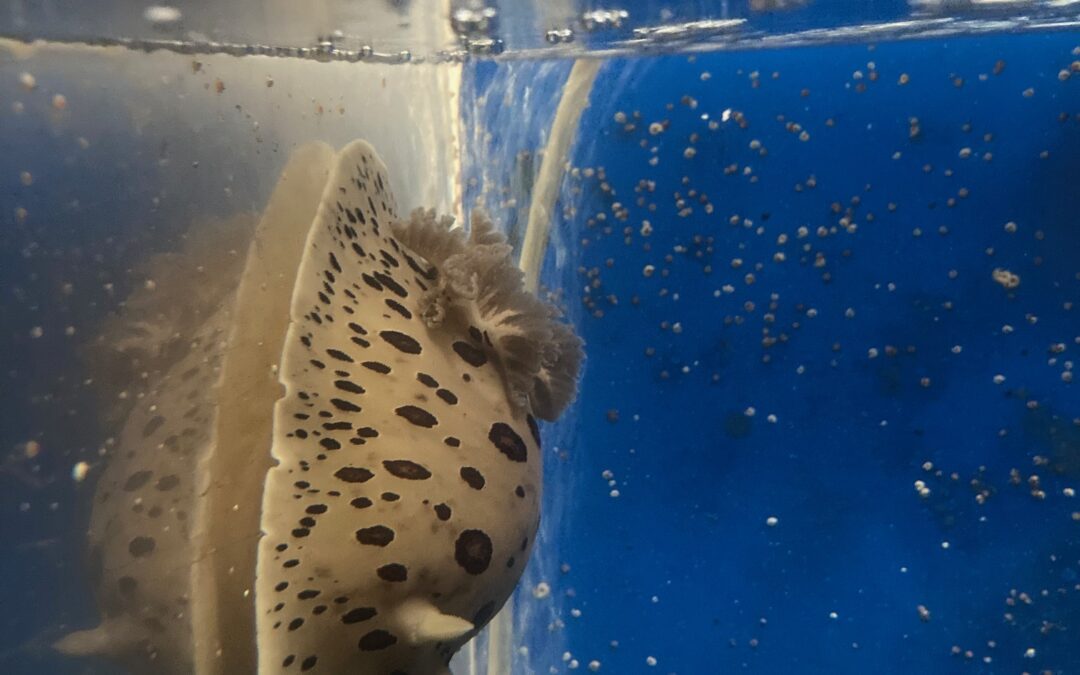Nudibranchs, sometimes called sea slugs, are often easy to miss when visiting the intertidal zone. Often an inch or less long, they are soft-bodied animals that use external gills to breathe, and tend to stay under the cover of water. They are sorted into two main types, dorids and aeolids.
Often at their younger life stages, nudibranchs find their way into Feiro’s exhibits riding in with our seawater through our open-flow system. We have to be careful about looking for these animals, as they can be deposited into exhibits with their prey – which we may not always want to facilitate. However, we have been watching one nudibranch, a northern spotted leopard dorid eat its way through two exhibits’ worth of sponge. Last summer it started eating the sponge in one of our touch tanks, and by January it had grown to four inches long!


When most of the sponge in that exhibit had been consumed, Facilities director Tamara relocated the leopard dorid to a different exhibit that also had a significant amount of sponge – its preferred food. Sea sponges are also animals, ones who play an important role in the ocean ecosystem. As filter feeders, they help maintain ecosystem health and act as a “sink” for critical elements, such as carbon, nitrogen and phosphorous.
You can see that the dorid wasted no time making tracks into the sponge in its new exhibit (which also features hagfish and spot shrimp).

Presenting itself to the front of the exhibit this week (perhaps it needed a bit of time to digest its food), Tamara was able to measure the nudibranch to approximately 6 inches – an additional two inches added since January 8!

Textbooks indicate that this species of dorid can attain 7.5 inches long – which may prevent it from exiting our exhibits via the outflow system, but possibly not. In January 2021 Tamara retrieved a very large nudibranch called a sea lemon that was blocking a pipe and it was about the length of her palm!

We will keep you updated on the leopard dorid’s growth, to see if it will attain or grow beyond maximum predictions.





